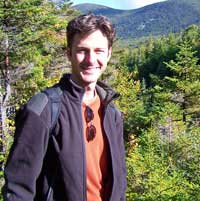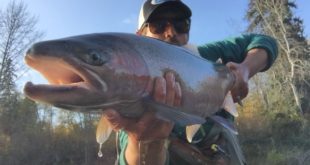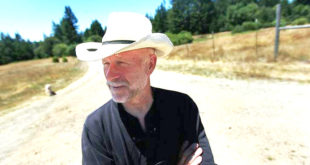Thursday, May 15, 2008, 7:00 p.m.
Gualala Community Center
47950 Center St., Gualala
Friends of the Gualala River presents a public program featuring Matthew Deitch, Ph.D. from the Center for Ecosystem Management and Restoration.
 “If the steelhead and coho that were once abundant in coastal California are to have any chance of recovering in the 21st Century, agencies and stakeholders alike need to re-think how we evaluate water use.
“If the steelhead and coho that were once abundant in coastal California are to have any chance of recovering in the 21st Century, agencies and stakeholders alike need to re-think how we evaluate water use.
Methods of defining water use have historically been too broad for ecological relevance: time scales such as volume per year do not capture the potential for impacts of diversions relative to fish needs, and a sum of water rights over the entire watershed cannot be adequately extrapolated to describe impacts locally where fish live.
Legal loopholes and inaction have compounded these problems, creating a scenario of water management in the region that poses prolific challenges for salmonids from egg until death.
To protect flows for salmonids, we need new approaches for describing water that account for variations in time and location. In this presentation, I will share data documenting the pressures that humans place on streamflow, and discuss how policies indirectly encourage such actions.
I’ll then talk about different ways we can describe water use, some of which have been incorporated into proposed water management policies, and some of which have not. These descriptions can be built into models to describe cumulative effects of many projects through the stream system, under streamflow conditions that salmonids may encounter where they live.
Finally, I’ll discuss how these models are being used in early phases to preserve flows for salmonids while, where possible, providing water for grape growers as well. We can then discuss issues relevant to the Gualala River, and steps that groups like the Friends of the Gualala River can take to encourage meaningful water management in your watershed.”
Dr. Deitch has participated in hydrolgy, geomorphology, and stream ecology projects in California since 2001, including sediment TMDL, FERC relicensing, and environmental flow studies. His recent projects involve conducting hydrologic studies and using GIS to develop and test policy scenarios related to aquatic ecosystem conservation in coastal California streams. He received his Ph.D. from the University of California at Berkeley.
 Friends of Gualala River Protecting the Gualala River watershed and the species living within it
Friends of Gualala River Protecting the Gualala River watershed and the species living within it


